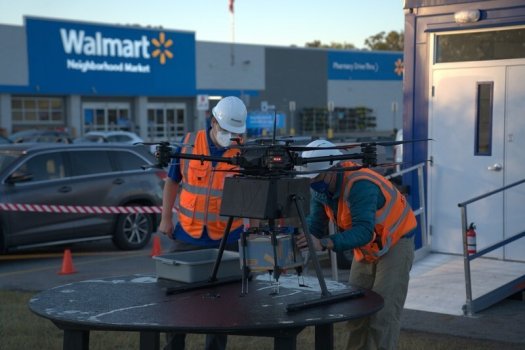DroneUp Becomes 2nd Walmart Partner to Start Aerial Delivery in Northwest Arkansas
- Technology Solutions
- 0 Replies
Days after Walmart Inc. of Bentonville and drone company Zipline International Inc. began aerial deliveries in northwest Arkansas, the retail giant has announced expanded drone delivery in the region through DroneUp LLC of Virginia Beach, Virginia.
Delivery through DroneUp is now available seven days a week for eligible customers in Farmington, with service scheduled to begin in the coming months from a Walmart Neighborhood Market in Rogers and a Walmart Supercenter in Bentonville, according to a news release.
Thousands of items are available for delivery in as little as 30 minutes to homes within one mile of the launch locations. Flight engineers certified by the Federal Aviation Administration manage the delivery and lower packages up to 3 pounds from a height of 80 feet.
Continue reading: https://www.arkansasbusiness.com/article/138113/droneup-becomes-2nd-walmart-partner-to-launch-aerial-delivery-in-northwest-arkansas
Delivery through DroneUp is now available seven days a week for eligible customers in Farmington, with service scheduled to begin in the coming months from a Walmart Neighborhood Market in Rogers and a Walmart Supercenter in Bentonville, according to a news release.
Thousands of items are available for delivery in as little as 30 minutes to homes within one mile of the launch locations. Flight engineers certified by the Federal Aviation Administration manage the delivery and lower packages up to 3 pounds from a height of 80 feet.
Continue reading: https://www.arkansasbusiness.com/article/138113/droneup-becomes-2nd-walmart-partner-to-launch-aerial-delivery-in-northwest-arkansas

























